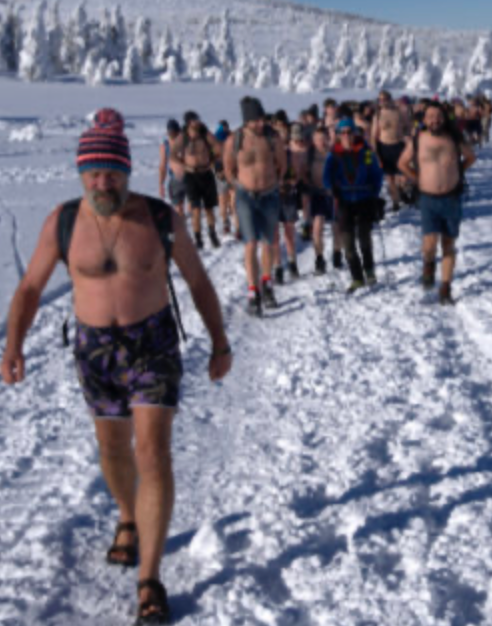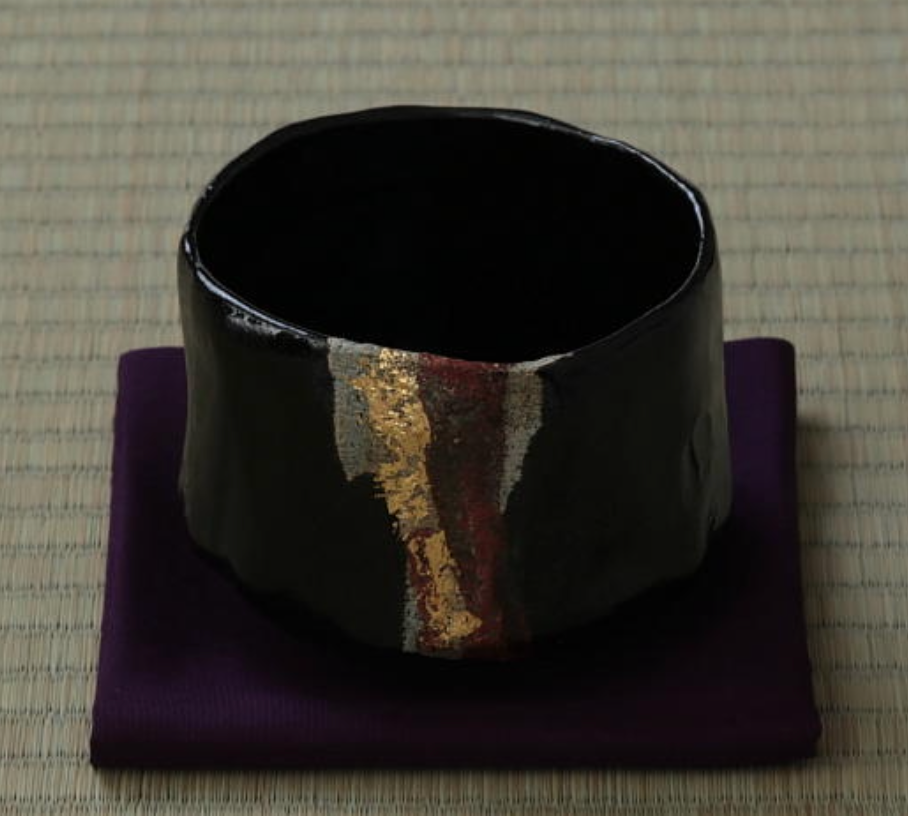Moving Beautifully Through 2022: The Recovery Edition Part I*
- Catherine Flutsch

- Jun 7, 2022
- 7 min read
Updated: Aug 11, 2022

Although this is a culture and lifestyle blog, regular readers will know that I rarely write about lifestyle. My few previous posts about lifestyle have been about exercise or food. I’m pretty uncomfortable holding my own lifestyle up as some sort of example to others. But I wanted to write this recovery edition because so many of the people I care about (including me) are in the process of recovery – from covid, from stresses, or for other reasons. I wanted to list some of the things that I do that have helped me feel a bit better. It ended up being a rather long post, so I've split it into two.
It may be that some of the things I mention might help you too – I hope so.
Wishing you an uneventful, linear and complete recovery.

Cold Therapy/Breath Work**
Whenever anybody talks about cold therapy and breath work – the name Wim Hof, aka, the Iceman, always come up. I first became aware of Wim Hof decades ago, when he started offering cold training camps in Poland. I had always intended to do one of the camps, though never made it a priority.

Wim Hof training camp
With Wim Hof’s new series on the BBC, I thought I would finally start giving the Wim Hof method a go. There’s plenty of reputable scientific evidence on the benefits of breath work and meditation, there is less on cold exposure alone. However, on the basis of the evidence available, I think it’s reasonable to conclude that a lot of people will get real benefits from doing a method of cold exposure alongside breath work – such as the Wim Hof method.

Wim Hof training camp.
I’ve been doing the Wim Hof method for a while now and I’m quite enjoying it in a sort of masochistic way! For that reason alone, for me, it’s worth doing. It’s also one of the few health/lifestyle trends that is free (or may even save you money)!

At its most basic, the Wim Hof method involves cold exposure via a cold shower, as well as doing some breathing exercises. When I first started, I followed Wim’s recommendation to start with a normal warm shower and then turn down the hot water for a period of 15 seconds. The idea is to gradually build up the cold exposure from that point. There is some evidence to suggest that the maximum benefit is obtained by a 2 minute cold shower. So that’s what I do every morning – I go straight into a 2 minute cold shower. Does it ever get easier? Yes. Is it ever easy? No.

Wim How doing his world record ice submersion: CC Licence: Attribution-ShareAlike 2.0 Generic
One tangible benefit is that I really do feel as though I’ve achieved something every morning just by having a cold shower! Another benefit is that the rest of the family has a good laugh as they hear my squeals each morning. It really does require some serious mental resolve to go from a nice warm bed into a freezing cold shower.

© Jorge Fernandez
Wim Hof’s breathing exercises are a combination of hyperventilation via 30-40 continuous and deep breaths, followed by a period of hypoventilation – holding your breath for a sustained period. Each cycle of hyper/hypo ventilation is a round, and each session consists of at least 3 rounds.
Here is Wim Hof’s beginner’s guided breathing/meditation – which I find great.
Once you’re easily able to hold your breath for one and a half minutes, then you can progress to the more advanced guided breathing technique here.
Matcha
Matcha is a type of Japanese green tea made from the granite ground, dried leaves of the camelia sinensis (from which all proper tea is made), grown under shade for 3-4 weeks prior to harvest. There is plenty of evidence to show the health benefits of matcha, including on mental health. If you’re interested you can find some further reading here.

Good quality matcha should almost be fluorescent green. Photo © CFlutsch.
I drink one cup of matcha every day and have been doing so for many years. Matcha drinking can turn into an obsession – with beautiful matcha bowls selling for thousands of pounds.

This matcha bowl is made by Kyoshitsu Sasaki at Kirai kiln and costs US$2980. You can buy it here.
Here is a video showing how matcha is traditionally made.
Needless to say that I do not make my daily matcha that way. I use a normal mug – a kettle that I estimate has water of around 80C and instead of a lovely bamboo whisk, I use an aerolatte. My aerolatte whisks the matcha and a smaller amount of hot water together very well – then I top my mug up with more hot water. Even with this sacrilegious method, it still does feel like a little ceremony and it does make a very nice cup of matcha in about 30 seconds.

One thing the research does show is that the quality of the matcha is indicative of whether it will provide health benefits. The best quality matcha should be labelled “Ceremonial Grade” (in theory, because it is of sufficient quality to be used in tea ceremonies), relatively freshly harvested and recently ground. While good quality matcha is not cheap, per cup, it’s probably cheaper than your daily cafe coffee.

My daily cup of matcha. Photo © CFlutsch.
There is some good quality matcha available in the UK and a lot of terrible quality matcha. Good quality matcha will always be expensive. Bad quality matcha won’t always be cheap. Generally, good quality matcha will be labelled "Ceremonial Grade", and will have a clean, clear, slightly herbal and astringent taste. It should be an almost flourescent green and very refreshing. Ideally, you should also be able to find information about when the matcha was harvested. Lesser quality matcha has a dull green, almost dusty look and tastes strongly grassy. If you want to try matcha for the first time, then buy a good quality matcha so that you know what it should taste like. Or ask a matcha-loving friend to make you a cup.
Added Sugar
There is an overwhelming amount of scientific research to show that eating refined added sugar can lead to everything from cardiovascular disease to increased anxiety.

Refined, added sugar can come in all sorts of forms and have all sorts of labels, including benign sounding things such as concentrated apple or grape juice. Sadly, even honey, maple syrup and coconut blossom nectar count as refined added sugar for health purposes. Pretty much anything ending with "ose" is also going to count as added sugar including dextrose, fructose, glucose, lactose, maltose and sucrose. Often anything with corn in the label will be added sugar, such as corn sweetener, corn syrup or high-fructose corn syrup.

Almost all processed and ultra processed food will contain refined, added sugar of some sort. In addition to being directly detrimental to health, eating refined added sugar can contribute to hyper palatability syndrome. If you're interested you can find further reading here.

Hyper palatality syndrome makes it difficult to stop eating food that has been engineered to have sugar, fat and salt in just the right ratios to make it literally irresistable to us. In my opinion, hyper palatability syndrome also undermines our ability to eat healthy, whole food because healthy whole food tastes bland and boring to a palate habituated to food engineered to be hyper palatable. Retraining a palate to enjoy natural, whole food as delicious can be quite a commitment.

I gave up added sugar in January and 10kg just dropped off me - without any effort at all. I felt less stressed and generally better all round. Slowly my palate changed – now fruit tastes like candy to me. Any processed sweets or desserts taste way too headache-inducingly sweet. If you want to add an extra dimension to your recovery, you can think about giving up added sugar. It's comforting to know that the cravings will go, your tastes will change and natural, whole food will start tasting the way it should - delicious.
Feature image by Drew Farwel
Did you enjoy reading this? You might enjoy my other posts from my Moving Beautifully series, which you can find here. You may also like my posts about food, which you can find here.
I care about your safety! If you are thinking about doing any of the things I mention in this post, then please read the safety warnings below.
*This article is for entertainment and education purposes only. Before starting any new challenge or lifestyle change you should consult your doctor. You should not rely on this article as a substitute for professional advice and this article does not replace a health professional. If you want to try anything I mention in this article, you need to check with your doctor that you are physically and mentally safe to do so.
**If you have impaired mental or physical health, then you need to ask your doctor before attempting cold therapy or breath work, particularly the Wim Hot method. Wim Hof's breath work can lead to dizziness, tingling, hallucinations and in extreme cases loss of consciousness. This means that you should only practice Wim Hof's breath work in a safe environment, preferably with someone close by in case of emergencies and by lying down or sitting in a way that you will not hurt yourself if you lose consciousness. Do not practice breath work while operating machinery or driving. Do not practice breath work at the same time as cold water therapy or near any body of water.
Do not practice the Wim How method, cold therapy or breath work if you have:
• Migraines
• Epilepsy • High blood pressure • Coronary heart disease (e.g. Angina Pectoris; Stable Angina, etc) • A history of serious health issues like heart failure or stroke.
Children should not practice cold therapy and breath work unless a doctor has given the go-ahead and a responsible, supervising adult is present at all times.




Comments